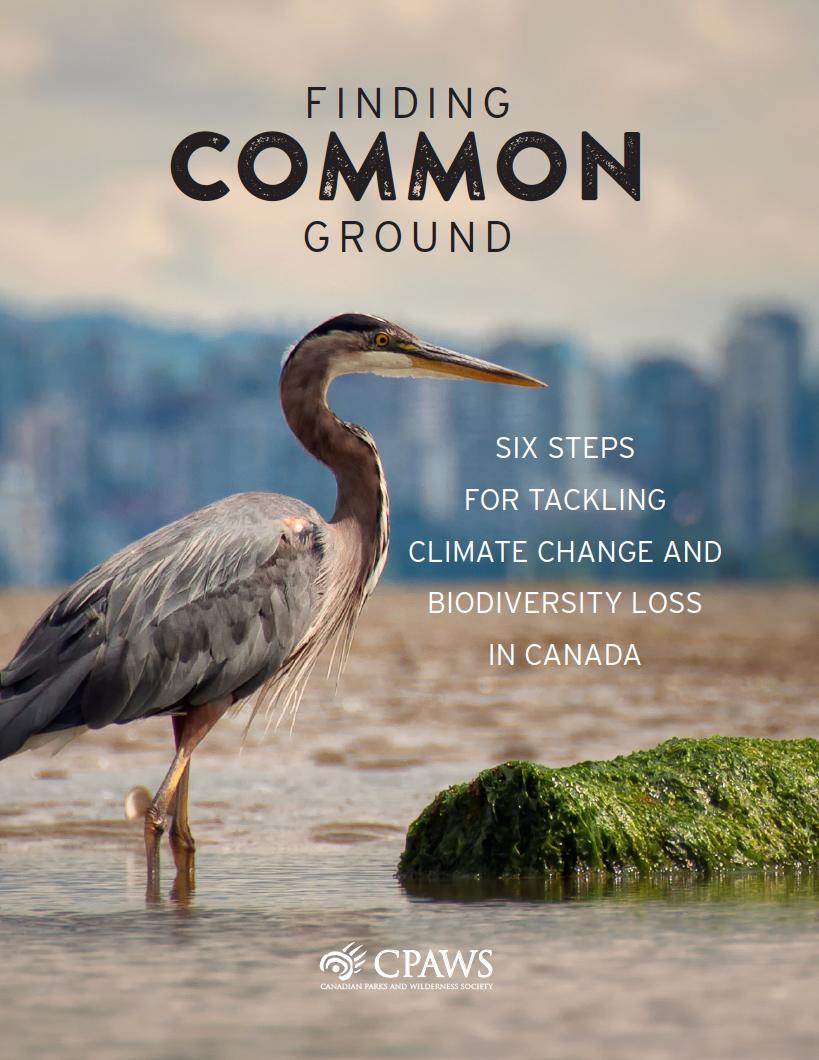Canada’s vast forests, grasslands, oceans, and wetlands provide essential ecosystem services that have already absorbed significant greenhouse gas (GHG) emissions. Yet these globally significant ecosystems could play a much bigger role in climate change mitigation with increased protection and wise stewardship. This is the case advanced in Finding Common Ground, a recently released Metcalf-funded publication from the Canadian Parks and Wilderness Society (CPAWS). In the report, lead author Florence Daviet and her team present a road-map for both scientists and policymakers to use conservation strategies as a means to achieve climate and biodiversity goals.
While Canada was an early signatory to the Paris Agreement and governments at all levels have recognized the urgency of climate change, the country is not on track to meet its Paris Agreement Goals. Nature-based climate solutions offer a significant contribution to these goals. This is especially true in Canada, which is home to 25% of Earth’s wetlands and boreal forests, 20% of the planet’s freshwater resources, unique and endangered prairie grasslands, and the world’s longest coastline.
The report identifies a number of technical and political barriers to utilizing nature-based climate solutions, including: a lack of accountability for GHG emissions from exploiting forests, wetlands and other sources of ecosystem carbon; challenges in considering nature-based solutions as mitigation options since not all biodiversity measures deliver GHG emission reductions and vice versa; the shortcomings in GHG accounting methodologies in capturing the emission reduction potential of ecosystem-based solutions; and the uncertain future of ecosystems themselves in light of changing climate conditions and a host of associated impacts.
To address these uncertainties, the authors propose a six-step roadmap for federal policymakers to build a bridge between conservation and climate goals in order to capture and promote nature-based emission reductions, many of which can be pursued immediately:
- Increase the ecosystem emission reductions to be achieved by 2030 in Canada’s commitments under the Paris Agreement. Describe the role of nature-based climate solutions for reducing those emissions.
- Start a Nature-Based Climate Solutions Fund to invest in a range of activities that aim to reduce emissions from land-use change and ecosystem degradation and deliver biodiversity benefits.
- In parallel, develop:
- GHG accounting rules for assessing emissions reductions and mitigation options that explicitly consider nature-based approaches.
- National rules for assessing the biodiversity impacts of the solutions proposed for addressing GHG emissions.
- Identify the public and private sector players that generate the greatest ecosystem GHG emissions in Canada, starting with activities that cause land-use change (such as deforestation) and result in long-term changes to ecosystems.
- Require federal agencies to screen all their proposed climate solutions for both ecosystem emissions and biodiversity impacts.
- Expand the sources covered by the Greenhouse Gas Pollution Pricing Act to include the ecosystem emissions generated by major emitters in Step 4 above.


